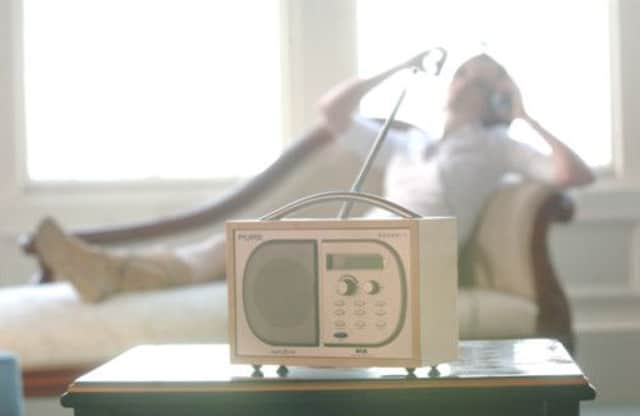Jane Devine: Let’s hear it for the humble radio


Apparently not. It seems whether it is news, music, talk or sport, many of us still enjoy a bit of transmitted background noise. Indeed, we learned last week that more of us are listening to radio than we have in a long time. BBC Radio 4’s weekly audience reached almost 11 million people while Radio 2’s was a whopping 15.5 million in 2012.
These figures, which show the highest radio audiences since the current method of counting began in 1999, prove that despite the growth in personal gadgetry, more and more of us like the wireless.
Advertisement
Hide AdAdvertisement
Hide AdIts main appeal, of course, is that you only have to listen. We can listen and drive, listen and read, listen and work, and even listen and exercise. We can fit radio into our lives without having to disrupt the many other thing we all have to (and like to) do.
Last week also saw the release of figures from Ofcom which showed that more people are now watching TV, with 91 per cent of adults watching their main set once a week compared with 88 per cent in 2002. The figures however, also pointed to the fact that people were “meshing”: that is, using other devices while watching, to tweet, text, surf or stream other content.
The difference between being distracted while watching TV and distracted while listening to radio is that with TV you miss out, but with radio that’s the main point.
The appeal of radio will never dwindle. It has survived the advent of television, cinema, videos and DVDs, gaming, the internet and the huge growth in personal technological devices. More than surviving, it has in fact embraced those changes, with more people than ever before listening via their mobile phones.
Radio appeals across generations and is used by different people in very different ways. We all know the stories of the British hostages held in Lebanon who were sustained and given hope by the BBC’s World Service. On a more domestic front, a radio left on, in my experience, has obscure but very useful benefits from preventing a break-in to calming a barking dog.
Radio is also well known and liked for the company it can provide through the wee small hours to insomniacs, depressives, parents of teenagers out on the town and nursing mothers.
It’s little wonder so many of us tune in every day. The way in which we listen to radio has survived the transformation of how we live our lives because it is based on the principle that you can do other things whilst listening – if you want to.
So, let’s hear it for the humble radio. Brought into existence over 100 years ago, it looks like it’s here to say. Video didn’t kill the radio star, and neither will the iPad.